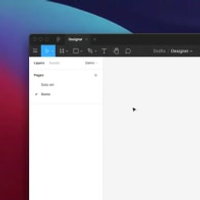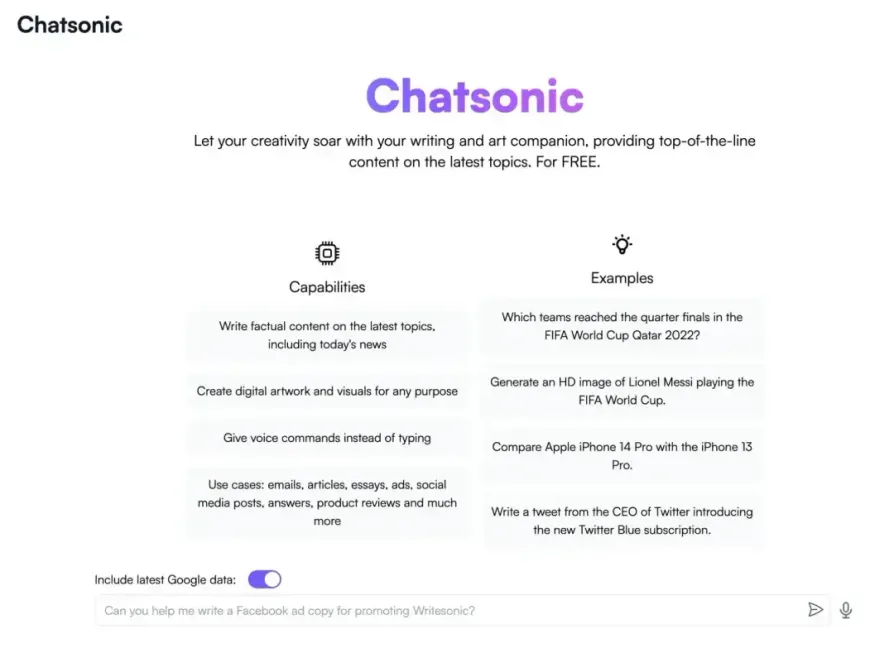

We believe that making machine learning accessible represents our greatest opportunity to empower everyday business users. That's why we built Obviously AI - The fastest & easiest no-code tool to build and run AI models in minutes, without writing code.
Magic Hour is an innovative platform designed to revolutionize the world of video production and visual content creation. With its cutting-edge technology and creative tools, Magic Hour provides an unparalleled experience for filmmakers, artists, and creators. This platform offers a vast array of features and resources, empowering users to bring their ideas to life with ease. From storyboard creation to post-production editing, Magic Hour simplifies the entire video production process, making it accessible to both professionals and amateurs alike. With its user-friendly interface and wide range of customizable options, Magic Hour sets the stage for limitless creativity and extraordinary visual storytelling.
Leap Touch is a revolutionary AI tool that promises to simplify the process of photo editing for users. With its advanced capabilities, this tool can transform images in seconds, enabling users to generate and edit photos with ease. The power of AI behind Leap Touch makes it an essential tool for anyone who wants to enhance their photos quickly and efficiently. Whether you're a professional photographer or just someone who loves taking pictures, Leap Touch has something to offer. Its intuitive interface and user-friendly features make it a must-have in your photo editing toolkit.
Prompt Art is an innovative tool that leverages the power of artificial intelligence to create stunning images in just a matter of seconds. Developed by utilizing the Stable Diffusion AI model, this cutting-edge technology is capable of generating highly realistic and detailed images based on user prompts. With its fast and efficient image creation capabilities, Prompt Art opens up endless possibilities for creative professionals and businesses looking to enhance their visual branding and marketing efforts.
Apeture, developed by Lexica, is an innovative artificial intelligence tool that generates images resembling real photographs. With its advanced algorithms and neural networks, Apeture can create stunning pieces of art that are indistinguishable from actual photos. This technology has the potential to revolutionize the world of digital art by providing artists with a powerful tool for creating unique and visually appealing images. The ability to generate AI art that looks like real photos opens up new possibilities for creative expression and expands the boundaries of what is possible in the world of art.
Aigur is a powerful platform that allows developers to build multi-user generative AI-based applications. With Aigur, developers can create intelligent applications that can learn and adapt to user behavior, making it possible to build more personalized and engaging experiences for users. The platform provides a range of tools and features that make it easy to develop, train, and deploy AI models, while also providing powerful data analytics capabilities to help developers better understand user behavior and improve application performance. Whether you're building a chatbot, a recommendation engine, or any other type of AI-based application, Aigur is the ideal platform to help you get started.

GPT-3 × Figma Plugin
AI Powered Design

500+ Openers For Tinder Written By GPT-3
500+ Original Conversation Starters

MarioGPT
AI-generated Super Mario Levels

Wolframalpha
Wolfram|Alpha: Computational Intelligence

Chatsonic
ChatSonic - A ChatGPT alternative with superpowers

FakeYou
FakeYou. Deep Fake Text to Speech.

Casetext
AI-Powered Legal Research

Voice-AI
Voice Analysis and Optimization
DALL-E, the latest creation of OpenAI, has taken the world of artificial intelligence by storm. It is an AI-powered image generator that can produce unique and creative images based on textual inputs. The name DALL-E is a wordplay on Salvador Dali, the surrealist painter, and Pixar's WALL-E character. The technology behind DALL-E is a combination of machine learning, natural language processing, and computer vision. Its remarkable ability to generate realistic images from textual descriptions has captured the attention of many artists, designers, and researchers worldwide.
The development of DALL-E represents a significant breakthrough in the field of AI image generation. Unlike other generative models that rely on pre-existing datasets, DALL-E creates images from scratch, giving it a unique edge in the market. This AI system can generate anything from a photorealistic fly with a top hat to an armchair shaped like an avocado. The range of possibilities is endless, making DALL-E a valuable tool for many industries, including advertising, fashion, and interior design.
In this article, we will delve deeper into the workings of DALL-E, explore its capabilities, and discuss its potential impact on various industries.
DALL-E is an AI image generator developed by OpenAI that can create images from textual input.
DALL-E works by using a neural network to generate images based on textual input. It uses a technique called GPT-3 to understand the context of the text and then generates an image based on that.
DALL-E can generate a wide variety of images, ranging from everyday objects like chairs and tables to more abstract concepts like "a dog wearing a hat riding a skateboard."
Yes, DALL-E can generate realistic images that are difficult to distinguish from real photos. However, it can also generate surreal and fantastical images that are not meant to be realistic.
No, DALL-E is currently only available to researchers and developers. However, OpenAI plans to release a commercial version in the future.
No, DALL-E can only generate static images at this time.
DALL-E is unique in that it can generate images based on textual input rather than just random noise or existing images. It also has a wider range of capabilities and can generate more complex images than other image generators.
DALL-E could be used in a variety of industries, including advertising, entertainment, and education. It could also be used to create custom images for websites or social media.
Yes, like any AI technology, there is a concern that DALL-E could be used to create fake images or spread misinformation. However, OpenAI has implemented safeguards to prevent this from happening.
AI image generation is still a relatively new field, but it has the potential to revolutionize the way we create and use images. As technology continues to advance, we can expect even more sophisticated image generators like DALL-E to emerge.
| Competitor | Description | Difference |
|---|---|---|
| GPT-3 (OpenAI) | A language processing AI model that can generate text | DALL-E generates images while GPT-3 generates text |
| BigGAN (Google) | An AI model that generates high-resolution images | DALL-E is more focused on generating unique and creative images |
| StyleGAN (NVIDIA) | An AI model that generates photorealistic images | DALL-E is more versatile in generating a wider range of images |
| CycleGAN (UC Berkeley) | An AI model that generates images by converting them from one style to another | DALL-E generates original images from scratch |
DALL-E is an AI image generator developed by OpenAI, a research company focused on artificial intelligence. The name DALL-E is a combination of the artist Salvador Dali and the animated character WALL-E. This innovative technology has gained massive attention for its ability to create unique and realistic images from textual descriptions.
Here are some essential things you should know about DALL-E:
1. How does DALL-E work?
DALL-E is based on GPT-3, which is a natural language processing model that can understand human language and generate text. DALL-E uses this model to convert textual inputs into visual outputs. It combines two neural networks: one that generates images and the other that evaluates the generated images' quality. DALL-E's architecture is designed to ensure that it produces high-quality and realistic images.
2. What makes DALL-E different from other AI image generators?
DALL-E is unique because it can create images from textual descriptions that do not exist in real life. For example, you can describe a "green elephant with butterfly wings" to DALL-E, and it will generate a realistic image of that description. This technology has enormous potential in various fields, including advertising, design, and entertainment.
3. What are the limitations of DALL-E?
Although DALL-E can create a vast range of images from textual descriptions, it still has some limitations. It is not perfect at generating complex shapes, such as cars or buildings. Additionally, DALL-E's output can be biased towards certain objects or concepts, depending on the data it was trained on.
4. What are the ethical concerns surrounding DALL-E?
There are concerns about the potential misuse of DALL-E's technology. It could be used to create fake news, propaganda, or misleading content. Additionally, DALL-E's output can perpetuate biases if it is trained on biased data. As with any new technology, it's essential to consider the ethical implications of its use.
In conclusion, DALL-E is a groundbreaking technology that has opened up numerous possibilities in the field of artificial intelligence. Its ability to generate images from textual descriptions has significant implications for various industries. However, it's essential to consider the ethical concerns surrounding its use and ensure that it is used responsibly.
TOP